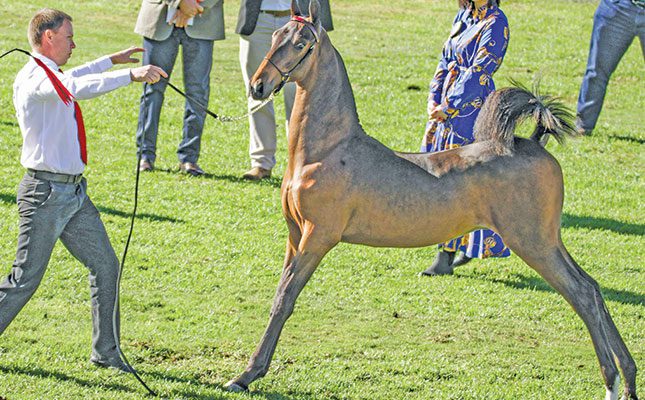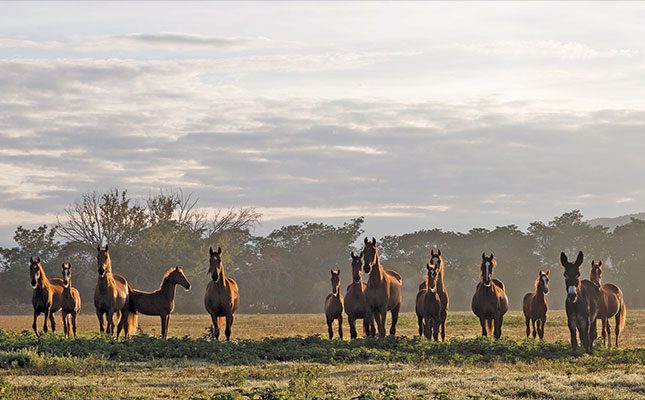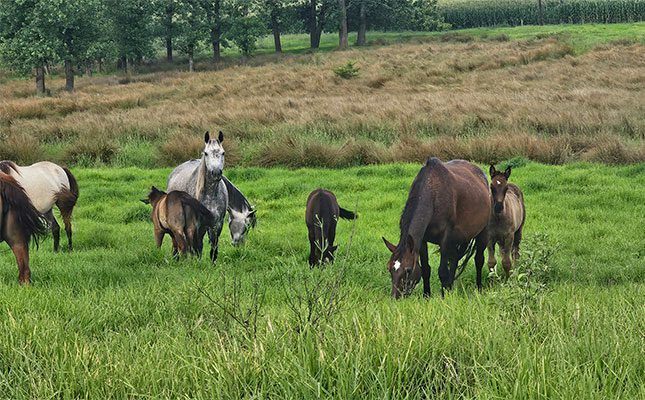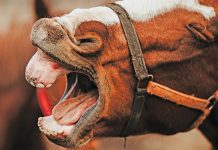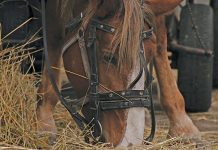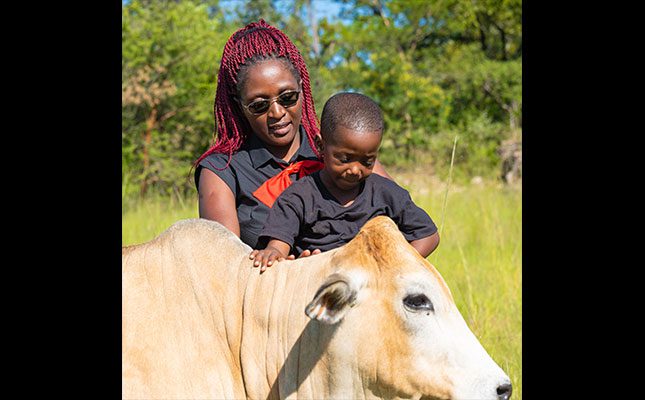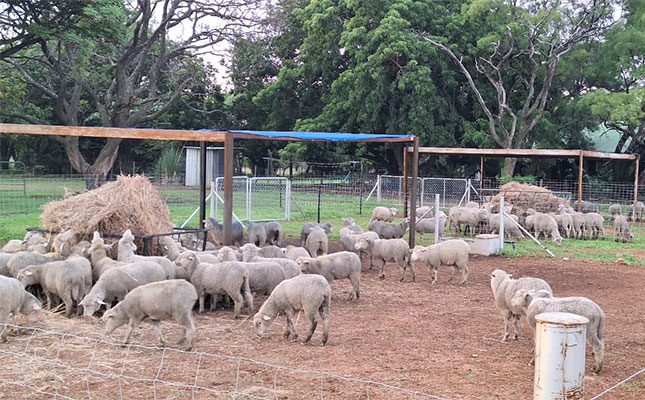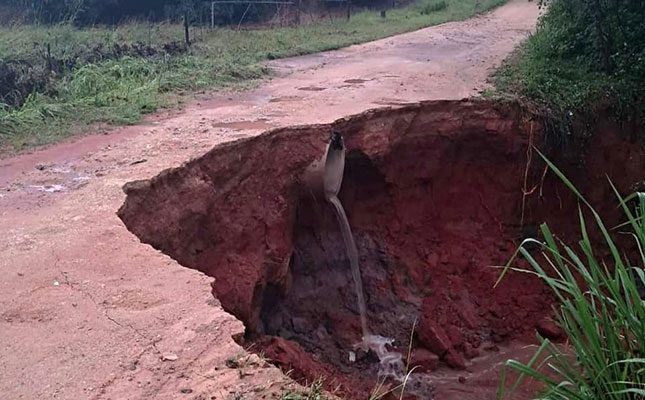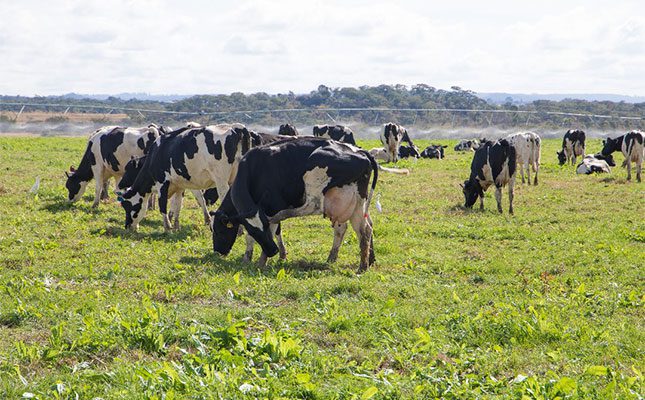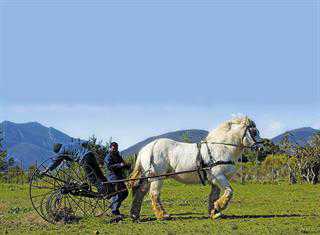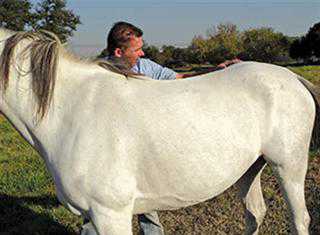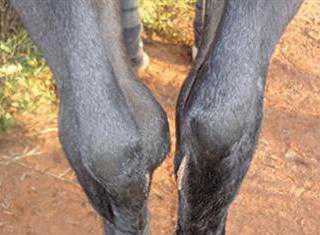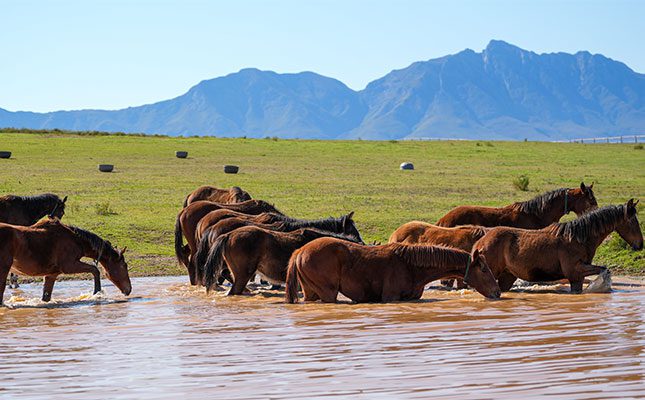
Photo: Supplied
Third-generation Thoroughbred breeder John Köster of Klawervlei Stud in the Breede Valley in the Western Cape has a twofold motto for his operation.
First is to breed the perfect Thoroughbred, or “as near perfect” as he can achieve.
Second, he strives to pursue this goal sustainably through a community-based lifestyle and working in harmony with nature.
“The horse is the noblest of God’s animals, and it is this magnificent animal that has also brought us together as a community,” he says.
Köster’s breeding philosophy is focused on balance. His herd comprises female lines that stem back to the distance or stamina type first imported from the UK by his grandfather Ralph Köster in 1953.
He believes the traits from this legacy remain core to breeding the type of horse that will not only perform as the sprinter demanded by the market nowadays, but will also go on to excel at premier distance races like the Cape Town Met or the Durban July Handicap.
Nature and terroir
Klawervlei is based near Bonnievale in the Breede River Valley on the edge of the Klein Karoo. It receives an average of 175mm of rain per year, and according to Köster, enjoys the same type of unique ‘terroir’ as experienced in Napa Valley in California, US, and Hunter Valley in New South Wales, Australia.
He describes horses as nomadic creatures that do best when they are farmed as naturally as possible.
“The nutrition goes from the soil to the plant, into the horse. The closer you can be to nature, the better for the horse,” he says.
His pastures and natural camps are all carefully analysed to ensure nutritional balance, while soils are also analysed for mineral and trace element composition so that feed content can be balanced accordingly. The stud’s feed is supplemented with Klawervlei Balancer, which is custom-manufactured by the feed company Equifeeds.
The farm is spread over roughly 600ha and is home to about 330 horses at any given time. These comprise about 120 broodmares (including partner or client mares boarded at the breeding facility), weanlings, yearlings, resident stud stallions and assorted nannies and teasers.
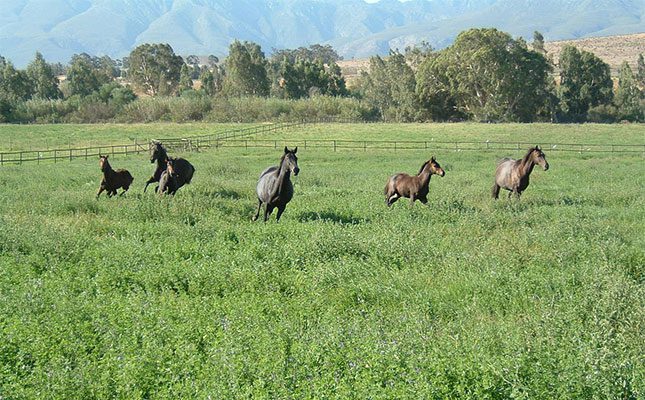
Broodmares are kept on mixed pastures established with appropriate grazing plants like lucerne, fescue, Bromus, and a variety of ryegrasses. In the winter months, broodmares are grazed on dryland lucerne and grass camps.
“It really is wonderful to watch the mares out there roaming through the natural veld as they eat all the different grass varieties. It comes back to that nomadic nature. Horses need to graze and roam,” says Köster.
He also supplements with lucerne imported from areas like the Karoo as this adds diversity due to the different mineral profile of the soil in which it is grown.
Breeding season
Breeding season generally begins in July with preparation for cover of maiden and barren mares.
Relevant scans and swabs are taken to ensure the barren mare’s uterus is clean and free of any infection. If the uterus has fluid accumulation, it will first be flushed with a saline solution and swabs will be taken to ensure the mare has a negative reading.
Scans will be performed pre-covering to follow follicle growth and ensure the mare is covered as close to ovulation as possible.
Foaling begins on 1 August each year in the Southern Hemisphere and this is recognised as the birthday for all Thoroughbreds in South Africa.
The mare has an 11-month gestation period, so covering begins 1 September each breeding season, usually continuing until end December.
Thoroughbreds can only be registered with the breed association if they were conceived through a live covering. This means that mares need to visit the stallion at stud and be physically mated.
Foaling mares are scanned prior to being sent to the stallion to ensure they are covered before ovulation.
Mares come into season in what is known as ‘foal heat’ at eight to 12 days post foaling, on which they are not covered. The second foal heat is usually at about 26 to 32 days and is the optimum time for covering.
The first pregnancy scan will be performed around 14 days after covering, at which stage Köster says the embryonic foal will measure about the size of a thumbnail. At 16 days another scan is performed to check for twins. If twins are found, one embryo is popped in the interests of the health of the broodmare and viability of the foal.
Köster says unlike sheep or goats, horses are not made to carry twins, and even in the rare case where this does happen, there is seldom a viable outcome. Another scan is done at 26 days, at which stage he says one can detect a heartbeat, with the final scan of the pregnancy following at 40 days.
Foaling down
The mare will foal down at roughly 11 months, but Köster says his foaling team works on observation rather than depending on an expected due date. This includes checking the udder to monitor how full it is, and looking for the wax plugs that form on the teat just prior to foaling.
Feeding of broodmares is carefully monitored across all three trimesters, with each being significant in its own right. Köster says the first trimester is crucial for formation of the foal in the uterus. In the last trimester, for example, it is important not to feed to much protein as the foal can then grow too large and create complications at birth.
The mares foal down outdoors in individual camps, unless it’s raining.
“Foaling outside is closer to nature. It is also easier for the newborn foals to stand up on grass than on straw in a stable,” says Köster.
Foaling camps are only utilised once a year. This is to ensure biosecurity and prevent any diseases.
Köster has two foaling teams on standby 24/7 with equipment, including oxygen and drips if needed. Mares that are stitched closed will be opened just prior to foaling. They are washed and tails are bandaged. They will be inspected to ensure the foal is not presented as breech (hindquarters first), and if normal, mares are left ‘to get on with it’ as far as possible.
Directly after foaling, the mare’s udder is washed and it is milked. A refractometer is used to determine the quality of the colostrum.
The foal is fed 500ml of colostrum immediately to ensure it gets its required intake. Köster says the stomach is most porous directly after birth, allowing for optimum uptake of vital antibodies produced in the colostrum.
The mare is then milked again and another 500ml of colostrum is kept frozen in a colostrum bank for use should any future foals require additional colostrum.
If the foal is strong on its feet, it and mum are move to an individual outdoor camp. Foals that may have splayed legs are stabled with their dams for the first few weeks to allow the legs to strengthen and settle and prevent injury from too much early movement.
After four to five days, a mare and her foal will be placed in a larger camp with another pair, allowing the dams to bond with their own foals while the youngsters get to start socialising.
Roughly a week later, these pairs will be placed together in camps in herds of about eight broodmares and foals per hectare, with these units remaining in place until weaning time at around four to six months.
Raised tough
Weanlings run in combined herds of colts and fillies, comprising about 15 to 20 foals in arid dryland camps of roughly 15ha. They are partnered with nanny horses, which will include both retired broodmares and/or geldings.
Weaning happens in phases so as to reduce stress, with mother and foal herds moved to the weaning camps en masse to acclimatise. At this stage, foals and mothers are being fed a balanced ration. After about two weeks, the team will gradually start removing one or two mares at a time, with the weanlings less likely to stress as they socialise among the rest of the youngsters.
The nannies are introduced towards the end of this phase. These horses take care of the weanlings, providing support if the foals become scared, for example, during a storm. They also teach the youngsters manners and how to behave.
Köster says the weanlings’ feed is supplemented, and this is also used as part of the strategy to optimise their body development.
“We feed them on one side of the camp and have the water on the other. This makes them walk and run around a lot, which in turn helps them develop their muscles, tendons and ligaments in a natural way,” he explains.
Weanling weight is carefully monitored during this phase of development. Any weanlings that are lagging will be removed to the stables for extra feeding, if necessary. If the weanlings are showing signs of becoming overweight, less supplementation is provided to prevent issues with joint development, for example.
“We do a monthly scoring on them where we will give points and comment on development and body condition, and whether they are early or late developers, and so on.
“They are raised tough, and the terrain and conditions are a part of what forms their development as horses. Winters are cold and summers can be tough too, but we keep a close eye and ensure they have balanced nutrition at all times.”
Yearlings are individually evaluated and selected for various sales around the country. The yearlings are brought into the barns three months prior to each sale to commence sales preparation.
Breeding strategy
The mare Off to War, dam to the Klawervlei-bred stallion Captain Al (who was eight times champion two-year-old sire as well as champion sire, and has now been champion broodmare sire for three years running) presents a picture that encapsulates the stud’s ethos.
She is named the matriarch of the stud, and years after her passing, Köster still considers this mare their ‘protector’ whose legacy lives on through her progeny.
Many of his current broodmares are mares that he has kept back or purpose-bred over decades. These include genetics dating back to the foundation stock his grandfather first imported from the UK mid-20th century.
Köster practices inbreeding, line-breeding and outcrossing, among other breeding strategies. Extensive knowledge of bloodlines means he will sometimes plan matchings with sibling line pairings or parent offspring lines at third, fourth, fifth or sixth generation levels.
He says at present, only about a fifth of the breeding herd is put to the three stallions at stud: William Longsword, Kommetdieding and Twice Over (GB).
The other 80% of the mares are sent to stallions across the country in line with specific matings planned to optimise the overall breeding and marketing strategy.
In response to a question about the move away from distance horses towards sprinters in Thoroughbred breeding over recent decades, Köster agrees he has witnessed this. He says South African Thoroughbreds are echoing developments elsewhere in the world.
A lot of this has to do with market dictates, he says, with buyers and owners wanting the Thoroughbreds to hit the ground running as early as possible for a quicker return on investment.
He maintains a balanced approach, though, and aims for a blend of speed and stamina that results in sprinters, milers and distance horses to cover all the market needs.
He says Klawervlei has added a lot of speed to its female lines in recent years through stallions like Captain Al, who hails back to the lesser represented Roberto line as opposed to more dominant Thoroughbred lines like Northern Dancer or Mr Prospector.
At the same time, he emphasises the importance of conformation, saying he is breeding a horse that must have the look of an athlete.
“You need to see the quality and the balance that creates a finely tuned athlete,” he says.
He breeds and selects for soundness, correct legs, temperament, proportion, and balance.
“You need to know your mare and the stallion intimately before deciding who to mate to who. By the third or fourth foal, you start knowing what type she will produce, and so you learn.”
He says he also uses genetics to breed for factors like hybrid vigour. He emphasises that the genes of a foal are a 50/50 split from its parents, making both mares and stallions equally important in a breeding strategy.
Achievements
Although described as a boutique stud, Klawervlei is no small fry in the industry. Köster says he markets 80 to 90 horses at sales across the country annually. Most are marketed as yearlings.
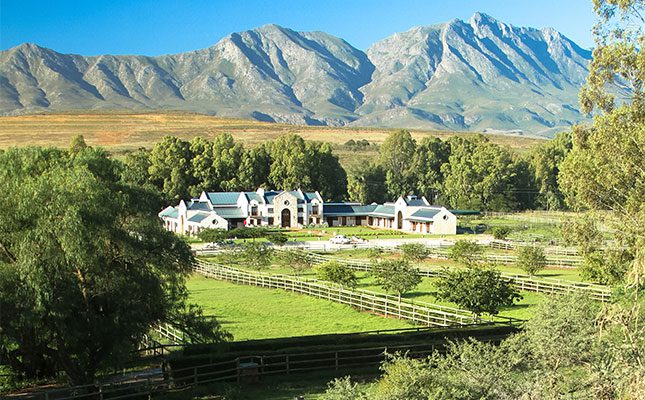
One of the highlights for Klawervlei is the fact that the stud has bred serial champion sire Captain Al, as well as four stallions currently ranked in the top 12 in South Africa, namely Vercingetorix, Rafeef, One World, and William Longsword.
“These are breeding stallions that have played a definitive role in improving the Thoroughbred studbook of South Africa.”
In the case of Vercingetorix, currently standing at stud at Maine Chance Farms, the stallion is so highly in demand that there have been 60 requests for only 20 available spots for the next breeding season.
These applications, at a service fee of R200 000 (R50 000 nomination fee plus R150 000 for a live foal) are being determined by a panel of shareholders and role players, of which Köster is part.
Another area of which Köster is extremely proud is the community-based involvement at the stud. His system includes a lot of investment into education of staff, who are encouraged to farm and care for their horses with a sense of pride and ownership.
Köster says his breeding enterprise is divided into separate divisions, each headed by a team leader overseeing relevant personnel. Divisions and leaders are: stallions – Alan Nel; foaling and general horse care – Marlize Mans; foal care – Davon Frederiks; mares and foals – Corniff Absolom and Manewill Mbangula; weanlings – Japie Booysen; yearling prep – Riaan Ruiters; sales – Tracey Nash; and admin – Hennie Barnard.
Köster has further uplifted workers by establishing education resources for their children, including an after-school facility (concentrating on reading, maths, drama and sport with the Anna Foundation) and bursaries for tertiary education.
In addition, a workers trust facilitates ownership of breeding stock by staff. Köster says his employees own five mares through the trust and are able to market the horses they breed at sales, with 50% of profits going to the staff and the remaining 50% for reinvestment to upgrade their stock.
This sense of community leaves him with a great sense of pride and is a core part of his motto to create a place where the Klawervlei community can live, learn and labour in harmony.
For more information visit klawervlei.co.za.

